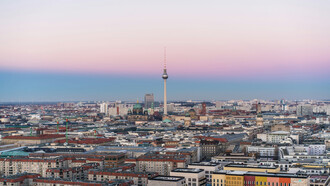The Brutalist aesthetic arose in architecture during the 1950s, after World War II. It was the result of survival, a desire to quickly restore cities and offer affordable homes for families. Although brutalism was not embraced by all; the Eastern world especially developed a revulsion for the movement connected with poverty and oppression.
Fortunately, a new cohort of artists and designers began to distinguish and appreciate the historic significance of brutalism. It is known as a movement that artistically accepts the exploration of rational, ordinary, raw material and is categorised by soft and simple forms that add ephemera to the space inhabited.
Brutalism has inspired pioneering modern furniture design and continues to influence contemporary interior design projects. In past and present years, we have witnessed a collection of designers creating monumental functional sculptures described as combining modern feeling with minimalism, which produce vivacious, statement pieces which favour monolithic shapes and monotone colour.
A designer who considered these elements was Louis Kahn. He crafted a flair that was monumental and monolithic; his compact structures did not eliminate their power.
Kahn shaped prominent and distinctive buildings which create a feeling of brutalism, minimalism, and postmodern ephemera.
His work sincerely inspired architects working within those realms, Frank Gehry once spoke of his appreciation for Kahn with works that evolved from his respect for Kahn.
The Salk Institute in La Jolla, California, is a prime instance of captivating, delightful geometric silhouettes. It depicts a sculpture whereby people immerse themselves in the gesture of light unfolding over time. It is experienced both internally and externally; it is felt and seen.
Brutalism was the principle of purity in structure and honest materials. Although these limitations are changing in contemporary conversation, The O.F.I.S. Series Tubular Armchair by Lucas Munoz presents the utility of industrialised components through a domestic form. It is fashioned from steel ventilation pipes and copper sheets, eluding the brilliance of brutalism.
Brutalism is expanding into new territory; the fashion company Attempt introduced The Wall, designed for Winter 2022. It draws a substantial amount of creativity from brutalism by radiating divergent visuals to showcase experimental silhouettes which customise new perceptions of clothing.
The industry is shifting into one that embraces the rebelliousness of normal ideals. It holds a shared awareness of the power of design to system new conversation and upholds a distinctive design language which can be seen customarily through a tonal palette that consents to the contours to sincerely lustre.
This design is a dissident of the design world, displaying eccentricity in the stangest fashion comprehendible, performing outwardly to lure and sustain industry focus, and being creative and inventive with humour at its core. It incites thought regarding its purpose, which is to ignite individualism, which is rare, kisch, and unusually pleasing.
Frank Gehry was criticized as “cantankerous.” Though it is a reaction from people to describe the rebellious nature of his spirit into a threshold of undesirable light rather than embrace his irregular and pioneering beliefs. It is in the bravery of Gehry that we witness impossible design, once told of the unnavigable complexities, but resolute to find a way.
Frank Gehry's Guggenheim Museum in Bilbao, Spain, is deemed the greatest significant structure built since 1980.
Gehry spotlights designers who contest conformist modes of thinking instead of defying established systems. In a world so clearly defined for us, we owe gratitude to the creatives who defy the order of things to invent, innovate, and improve our world to disrupt and redefine it as newly restored.
Frank Gehry revealed eleven limited-edition handbags for the brand Louis Vuitton. He conceptualised the silhouette and finish of his renowned buildings to recreate the bag form. The crossover between fashion and architecture perplexes the industry to eradicate boundaries.
For the collection, Gehry reimagined a trio of Louis Vuitton Capucines bags based on the form and finish of some of his best-known buildings.
Named Louis Vuitton x Frank Gehry, the collection contains bags inspired by the Canadian-American architect's buildings and by animals.
They were displayed at Art Basel Miami Beach in an installation featuring several of Gehry's previous pieces for the brand.















